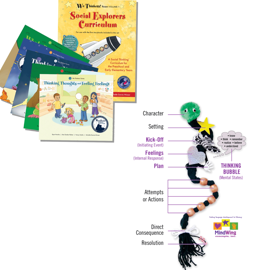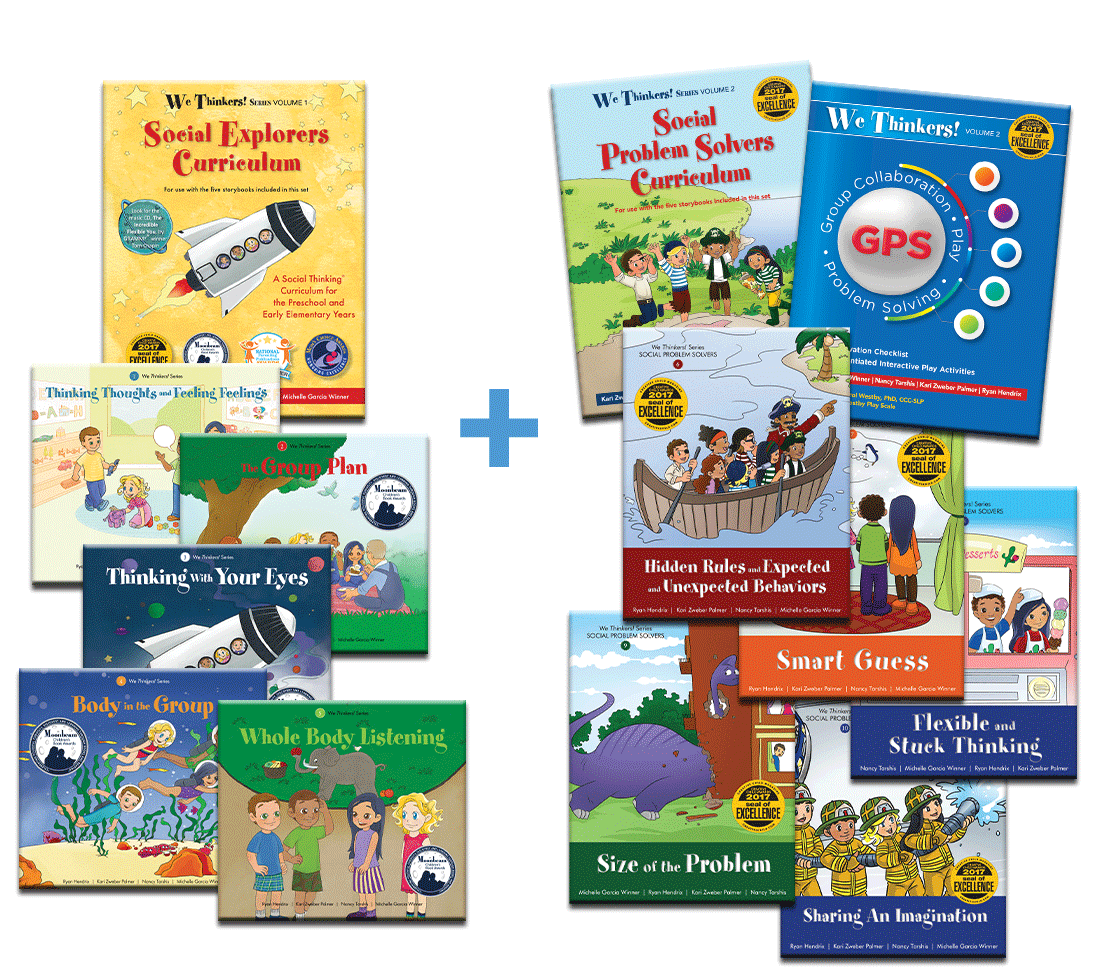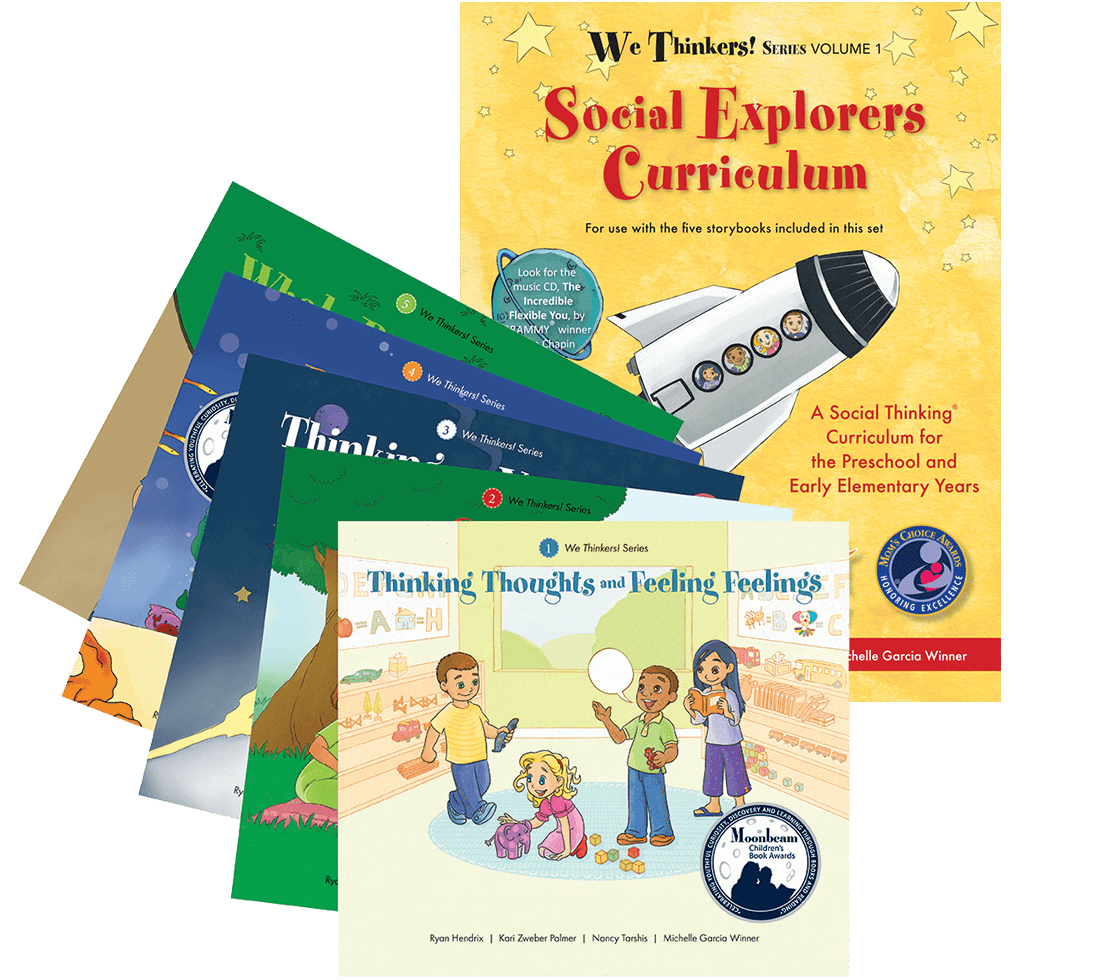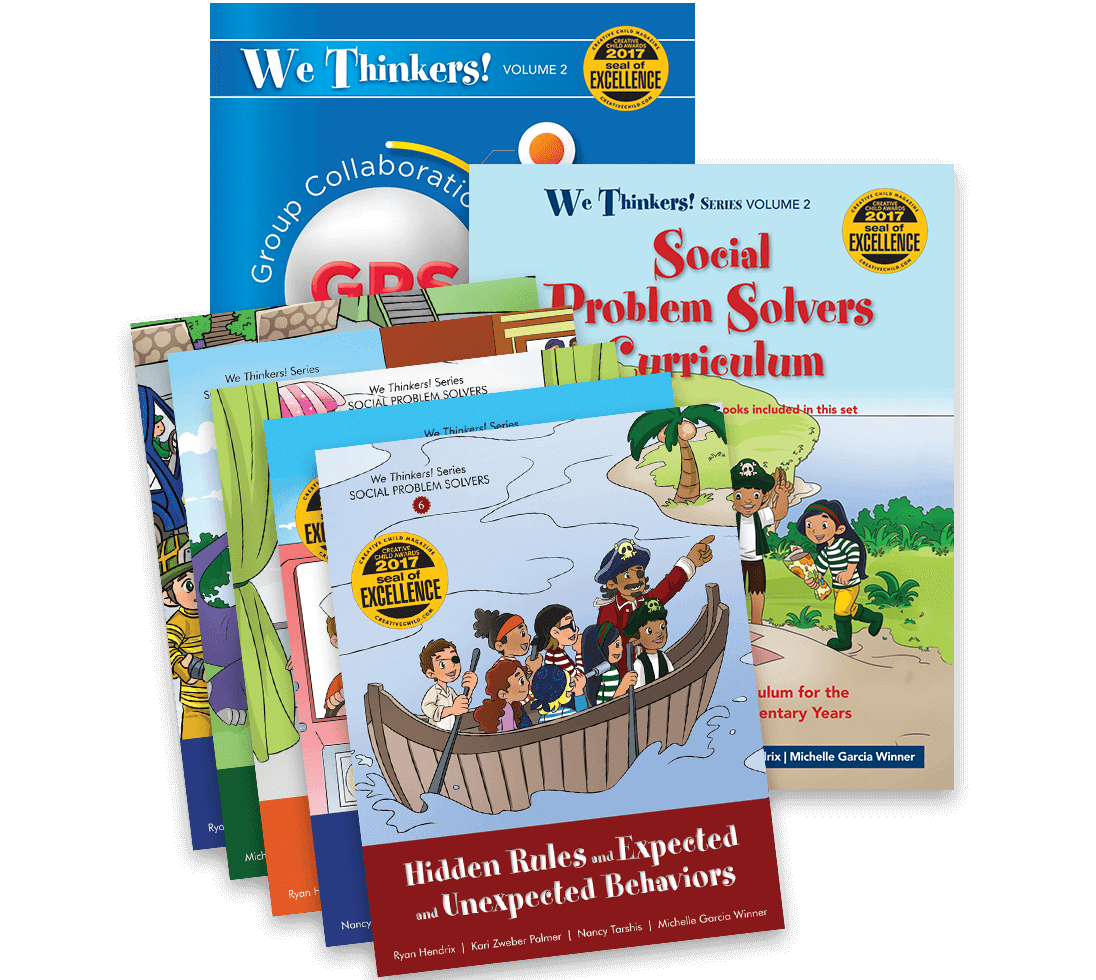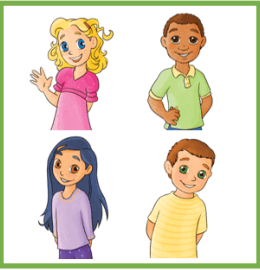© 2022 Think Social Publishing, Inc.
Note: If you’re not familiar with Braidy the StoryBraid (MindWing Concepts) and/or the We Thinkers! Volume 1 early learner curriculum (Social Thinking), please start by reading the short description of these teaching tools at the end of this article.
As a speech-language pathologist and a technology expert, I get excited when I find a program, curriculum, or teaching tool that brings about tangible, positive growth in children. When I find two that work seamlessly together to make learning even more powerful… that’s something I want to tell everyone about!
Since its release, I've found the We Thinkers! Volume 1 Social Explorers curriculum set (Hendrix, Zweber Palmer, Tarshis & Garcia Winner, 2013) to be an invaluable teaching tool! Targeted to early learners aged 4–7—but adaptable to older students who need basic social learning lessons—the We Thinkers! curriculum is designed to develop key Social Thinking® concepts through the medium children of this age learn best: stories and play! The four main characters, Evan, Ellie, Jesse, and Molly, embark on different adventures in each of the five storybooks, during which they help children learn and practice these five core Social Thinking concepts:
Thinking Thoughts and Feeling Feelings teaches the basic concepts that we all think “thoughts” with our brains, we all have feelings, and our actions can change others’ thoughts and feelings.
The Group Plan helps children understand what it means to be part of group, which is different than following one’s own plan. Sharing a thought with others is how we make and follow our group plans.
Thinking with Your Eyes teaches that there is a purpose in observing others and the environment. What people are looking at can give us clues about what they are thinking.
Body in the Group introduces the importance of keeping a comfortable physical presence around others, not too close and not too far away. One way we follow a group plan and connect with others is to keep our body in the group.
Listening with Body and Brain (Whole Body Listening) helps young children learn that listening involves more than just using their ears.
Each story has a curriculum lesson to teach the social concept, complete with a number of suggested play activities to practice the related concepts. These are so fun!
The We Thinkers! Volume 1 storybooks and play activities are early learner introductions to the larger Social Thinking Methodology that helps children become better social thinkers and social problem solvers. As more and more people understand that success in life stems not just from academics but involves a strong social awareness and understanding, teaching tools like We Thinkers! are being used for all young learners to facilitate this social–academic connection.
And that’s exactly where Braidy the StoryBraid comes in! We’ve found it to be a natural complement to the We Thinkers!, a companion tool to help strengthen children’s skills in listening, reading comprehension, critical thinking, and social–emotional growth. The different strategies related to teaching Social Thinking and Braidy are based on a similar philosophical framework, making it easy to combine these two different tools.
The We Thinkers! Volume 1 storybooks have five distinct settings—classroom, farm, space, ocean, and zoo—and by using Braidy’s setting icon when reading or teaching the story, teachers can help children learn to develop the skill of describing aspects of a setting (situational awareness). We have also tied in drawing activities to allow students to draw the different settings in the books.
Books 2–5 all have clear narrative structures, giving teachers an opportunity to scaffold retellings from the action sequence to complete episode levels. Successive lessons can provide that much-needed chance for review and additional practice, as students are eager to visit with Braidy and talk about the adventures of Evan, Ellie, Jesse, and Molly.
We have an example online of how we used Braidy to go through an analysis of We Thinkers! storybook #4, Body in the Group, at the complete episode level.
Body in the Group can also be retold using the help of Braidy as a simple action reaction sequence because the kids in the story encounter a kickoff—they come upon a shark in a cave and have to swim quickly as a group to escape to the safety of their boat!
Activities outlined in the We Thinkers! Volume 1 curriculum manual provide more practice in integrating play and narrative. For the dramatic play activity for Body in the Group, we practiced “sharing an imagination” and making a group plan. We thought of all the ways we could use a box (I like the cardboard that comes with flip-charts for this activity) in our play: as a boat, a diving board, and of course the cave! Our play plan emphasized both the Social Thinking concept of body in the group and the narrative elements of setting and actions.
We hope you have fun exploring this easy-to-implement connection between Braidy and the We Thinkers! Volume 1 stories and lessons created by our friends at Social Thinking. It’s a dynamic pairing to help children develop flexible social thinking skills.
Bio
Sean Sweeney, MS, MEd, CCC-SLP, is a speech-language pathologist and technology specialist working in private practice at the Ely Center in Newton, MA, and consults to local and national organizations on technology integration in speech and language interventions. His blog, SpeechTechie (www.speechtechie.com) looks at technology “through a language lens.” Contact him at sean@speechtechie.com.
About We Thinkers! Volume 1 Social Explorers and Braidy the StoryBraid
Braidy the StoryBraid and Story Grammar Marker®
"Braidy” is a child-sized puppet with different tactile and visual elements to represent the different components of a story. It is a multi-sensory teaching tool used with students from preschool through second grade as an early introduction to support narrative development. Colorful removable icons represent the organizational structure of a story: character(s), setting, event, feelings, responses, attempts to achieve a plan, and consequences.
Children can hold Braidy in their hands and move through the systematic process of deconstructing the message they read to further their comprehension or use it to help organize their own thoughts into language, either verbal or written. Teachers can use these icons to show the different parts of a story and the interrelationship among the parts, which help to foster the development of thought, intent, feelings, and perspective. The learning tool makes explicit the implicit nature of our narrative language which is both an internal (thinking) and external (verbal) process and presents itself through reading comprehension, storytelling, conversation, written expression, etc.
Braidy is the early childhood version of the Story Grammar Marker (right), which incorporates MindWing’s same icons to give elementary-aged children a visual, kinesthetic tool to help with many important “why” questions involving motivations, feelings, plans, and other aspects of critical thinking skills. Both Braidy and Story Grammar Marker help demonstrate the systematic manner through which we can teach our students abstract concepts in concrete ways and were developed by seasoned speech-language pathologist Maryellen Rooney Moreau (who is a frequent speaker at the Annual Global Social Thinking® Providers Conference). For more information on this teaching methodology, please go to http://mindwingconcepts.com/aboutus.htm
We Thinkers! Volume 1 Social Explorers consists of 5 storybooks and related curriculum to teach basic Social Thinking concepts to children aged 4–7. In this first volume we teach, in an explicit manner, core social concepts such as Thoughts and Feelings, The Group Plan, Thinking with Your Eyes, Body in the Group, and Listening with Body and Brain (Whole Body Listening). The Social Thinking Methodology is celebrated for providing concrete, straightforward, language-based teaching tools that parents and professionals can easily grasp and apply across settings. The We Thinkers! curriculum provides a scope and sequence for teaching social concepts to our young learners.









